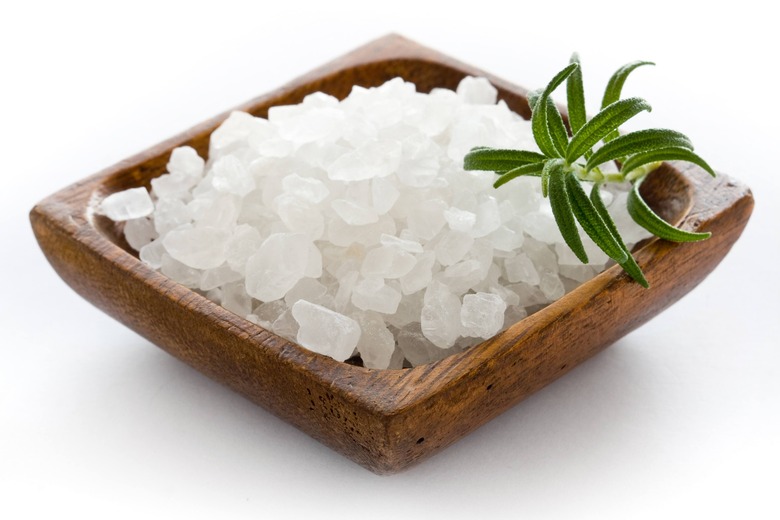Ocean Pollution Has Contaminated Your Fancy Sea Salt
Savvy consumers may be wary of seafood purchases thanks to ocean pollution and overfishing — but you probably didn't realize that environmental challenges affect something as simple as salt. A new study published recently in Scientific Reports by Plymouth (U.K.) University scientists has found that most sea salt (yes, even that fancy volcanic stuff you bought at a boutique shop) contains plastic microparticles. So when you think you're just adding some seasoning to food, you're unknowingly crunching on pollutant particles.
The study analyzed the material makeup of 17 brands of sea salt from locations around the world, including Malaysia, Australia, South Africa, France, Iran, Japan, Portugal, and New Zealand. Surprisingly, only one brand contained zero trace particles, while the other 16 all showed evidence of plastic contaminants. Of the 72 contaminants found, only 51 could be identified.
But don't toss your expensive sea salt in the trash just yet: The particles were incredibly tiny (under one millimeter in circumference) and likely would not harm us in such small doses. It's just yet another example of how human activity affects (and harms) the Earth.
"In my view, the concentrations of microplastics in seafood and in salt are sufficiently low that they do not present a concern for human health at present," biologist Richard Thompson told Hakai Magazine. "If we suspect these microplastics are toxic — if we suspect they might pose some health concerns — we have to be worried about them, until we are sure that they are safe."
